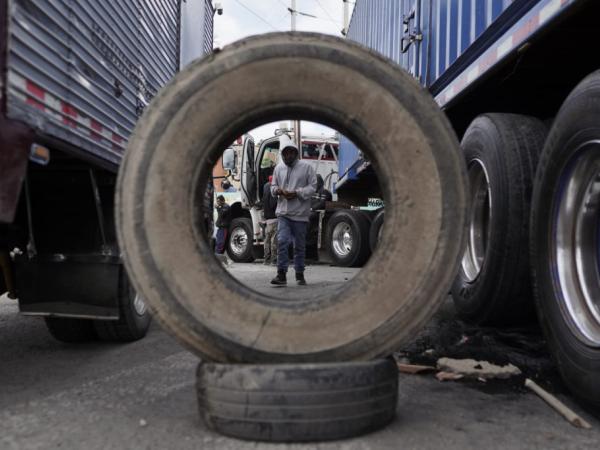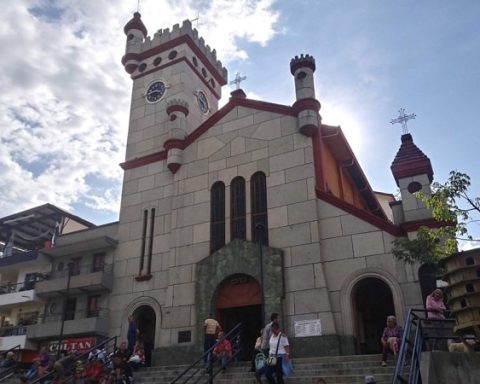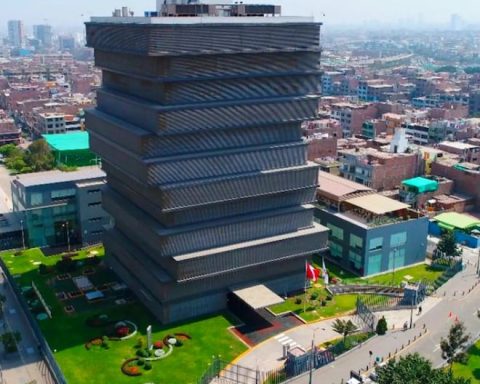The implementation of the Efficient Cost Information System for Motor Freight Transport (Sice-TAC) was an initiative of the Ministry of Transport, which began operating more than 10 years ago in order to guarantee the profitability of the freight transport sector.
However, since its implementation No updates have been made that go hand in hand with the current reality of the country, to take into account the oversupply of vehicles, As a result, transporters, especially the smaller ones, have seen their finances suffer.
You can read: Truckers’ strike threatens to revive aviation fuel crisis
This is one of the most important points that have been put on the table and about which the transporters assure that this replacement of the old freight tables has not been a real solution for the sector, since many of Business owners pay for the load at a value lower than that agreed upon for the tool.
It is worth remembering that Sice-TAC allows measuring or calculating the costs of cargo transport operations according to the characteristics of each trip: type of vehicle, type of cargo, origin/destination, estimated waiting hours, loading and unloading, among other factors.
It takes into account variable, fixed and other costs, according to the Ministry of Transport, so the value of the section can be managed online or through a manual calculation.
However, transporters say that due to the drop in cargo volumes, companies They would not be paying for the value that the tool provides.. They therefore request that its implementation be mandatory and that there be rigorous monitoring in this regard.
According to the Superintendency of Transportation, There have been 1,483 sanctioning processes for alleged violations of Sice-TAC. The control and surveillance body has also requested that 1,138 companies that have allegedly failed to comply with the economic relations regime for freight transport be prosecuted.
The Court also initiated preliminary proceedings against 46 cargo generators to determine their possible liability for violations of the economic relations regime.
Also read: Coal industry loses $8 billion daily due to undelivered cargo due to strike
Cargo transportation
Superintendence of Transport
Insufficient efforts
“(The transport unions) say that freight rates are insufficient, but that it is the freight generators who are not paying them what they are worth. The Supertransporte is reviewing this situation,” said Minister Ricardo Bonilla.
For José Stalin Rojas, director of the Logistics and Mobility Observatory of the Center for Development Research at the National University of Colombia, despite the surveillance of the Supertransporte, it must be taken into account that It is necessary to constantly update it as this is a reference system, and he acknowledges that the Government has made efforts to do so.
“Unfortunately, some sectors of freight transport are not reflected in the system, or they use another way to set their costs or negotiate their trips,” explains the expert.
But experts in the field also recognize that it must be updated in real time, seeking to allow more variables to be taken into account.
“Generally, the intermediation carried out by transport companies seeks to avoid high variations in the value of freight, which could occur when the owner of the cargo carries out the operation with the third party directly. The Sice-TAC aims to update this information based on the freight calculation formula that considers variable and fixed costs and distance. The problem is that the information is updated based on the evolution of values such as the ICTC (road freight transport cost index), inflation, among others, and the updating of the information in real time is not dynamic.”said Oscar Manco López, PhD in economic sciences.
In this sense, among the variables that should be considered when this update is a more detail on the volume of the type of load, times, exchange rate, delivery efficiencies, road conditions, road risks, type of cargo according to its value, to complement the formula.
“Transport companies know the cost of each trip in detail, in relation to fuel, maintenance, tolls, fixed costs, among others. In this way, the x-ray by company is quite precise in terms of cost per activity. However, it is not public information but rather information from each company, therefore, more integrated work is required so that operations are not impacted,” said the expert.
Read also: The strike continues: Government and transporters have not reached an agreement on the increase in diesel prices

Cargo transportation
THE TIME file
More imbalances in the equation
According to Rojas, another key point is to incorporate into the reference costs the compensation load variables and the volume contracted by the load generators in relation to the costs demanded by the truck.
Regarding the first point, Rojas explains that if a company in Bogotá is looking for merchandise to take to Barranquilla or other places, the scheme must ensure that a return load is also guaranteed, so that the trucks are efficient and do not travel alone, which is reflected in greater productivity.
As for the second, he explains that if, for example, a truck has a capacity of one ton and only 500 kilos are contracted, the value of the load does not compensate for the cost of transporting it, such as tolls, wear and tear on parts, fuel and oil, among others.
He added that the system should incorporate more representative figures and data based on the types of goods.
“Transporting cotton is not the same as transporting technological products. The risks are different and a series of other costs must be included, which must be covered in order to guarantee profits in some way,” he added.
Now, the transporters also assure that there has not been an update in the costs, because while these have risen more than 150% in the last 10 years, they have only increased 30% in the Sice-TAC, This is why Manco believes that a structural review of the system is necessary to respond to current transportation needs.
“For the carrier, the receipt of freight depends on the discount that the intermediation company makes and that is not charged to the carrier. An example of this is the insurability of the cargo, which is a high cost. The prices agreed upon in the negotiation are respected, but generally the risks are assumed by the transport company and therefore the values in the table are indicative, but the negotiation is decisive,” Oscar Manco Lopez pointed out.
At the same time, transporters are asking not only to update the system in terms of costs but also in terms of commercial value, as well as to include other vehicles in the sector such as dump trucks, light trucks, refrigerated vehicles, among others.
Paula Galeano Balaguera
Portfolio Journalist
















